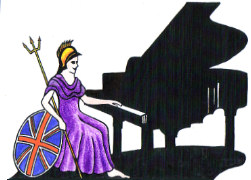Teachers, Accompanists and Piano Entertainers in the UK

UK Piano Page

34 Engate Street
London
Lewisham, London SE13 7HA
England
Robert Morley & Company Limited, established 1881
24 Coronet Stree
Haggerston
Bridport Place, London N16HD
England
Thornhill Pianos is a family business selling and
Canton Place
London Road
Bath, Bristol BA1 6AA
England
A large selection of carefully selected new and
65 Caversham Road
Reading, Berkshire RG1 8AD
England
Today, we supply all styles of Acoustic Piano,
28 Stamford New Road
Altrincham, Cheshire WA14 1EJ
England
If you are not near to a Dawsons store, you can
Music Festival for performers and guests Our 10th
18-06-2022 01:30PM
The Morecambe Bay Piano Group was set up to extend
11-12-2021 02:00PM
The Morecambe Bay Piano Group was set up to extend
08-01-2022 02:00PM
The Morecambe Bay Piano Group was set up to extend
12-02-2022 02:00PM
How big are upright pianos
Moden Upright pianos are usually between 110cm – 135cm in height, around 155cm wide and 60cm deep, the height being the major difference between models. You also have the old Mine piano at 70cm these are no longer made.
Upright pianos are popular because of their small footprint compared to a grand piano. While grand pianos may look more attractive, tall upright pianos are capable of producing a strong tone, wide dynamic range and better control in the keys and action than a small upright, Tall Uprights are usually only a few cms deeper and wider than shorter upright piano but will give you a much richer sound a good as most than a small Grands A small modern upright will have weight of 185kg a large one can exceed 235kg